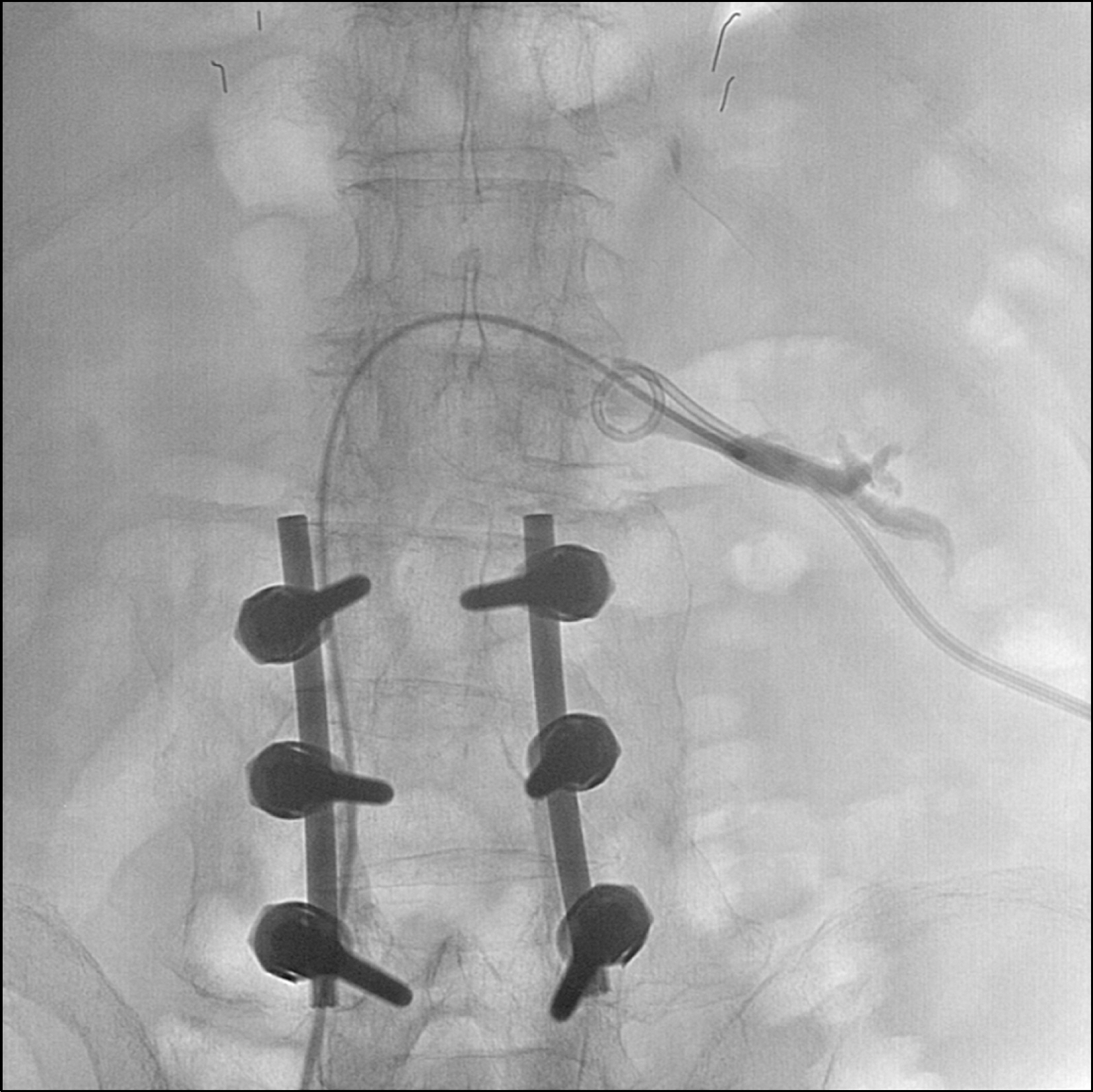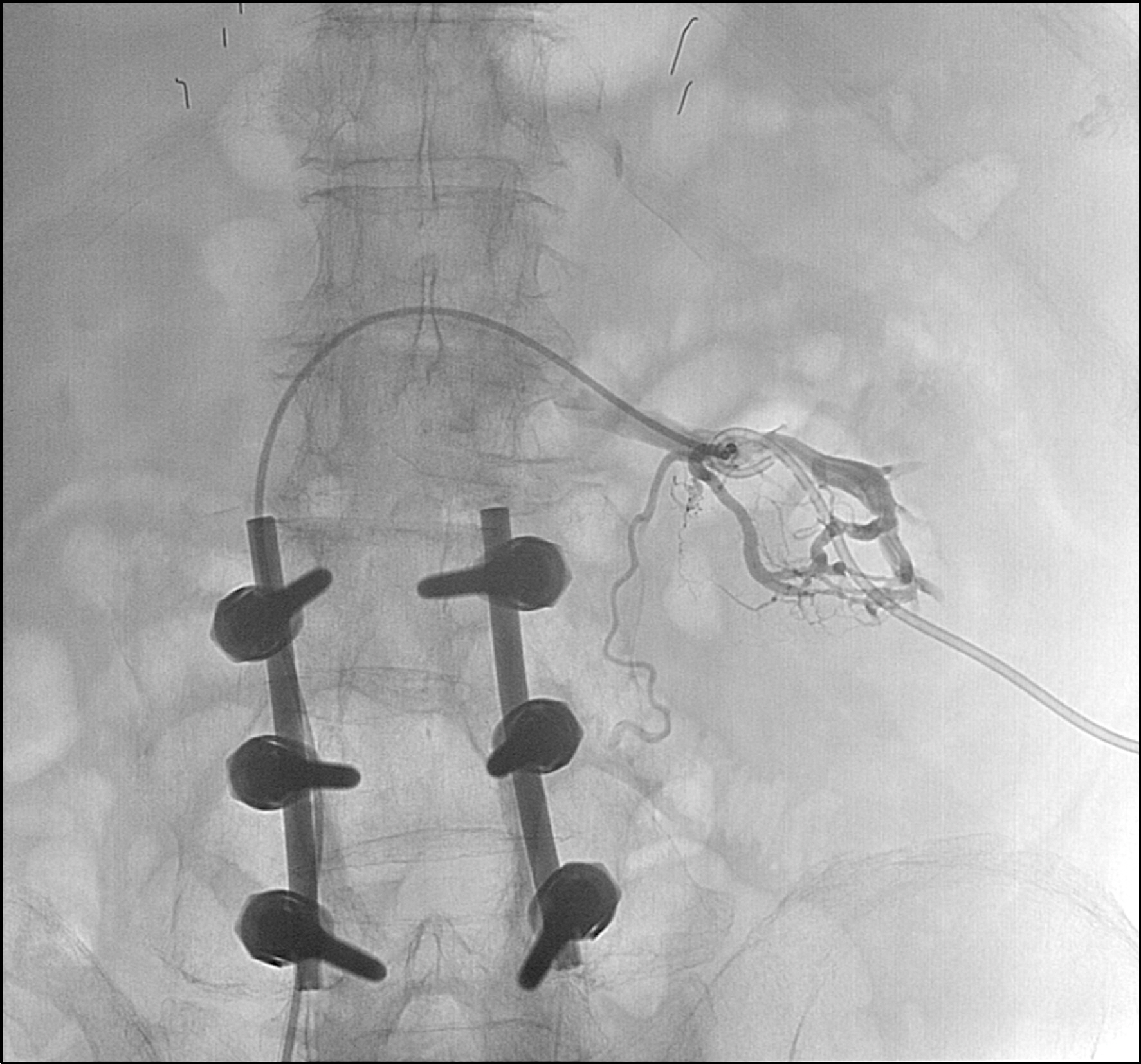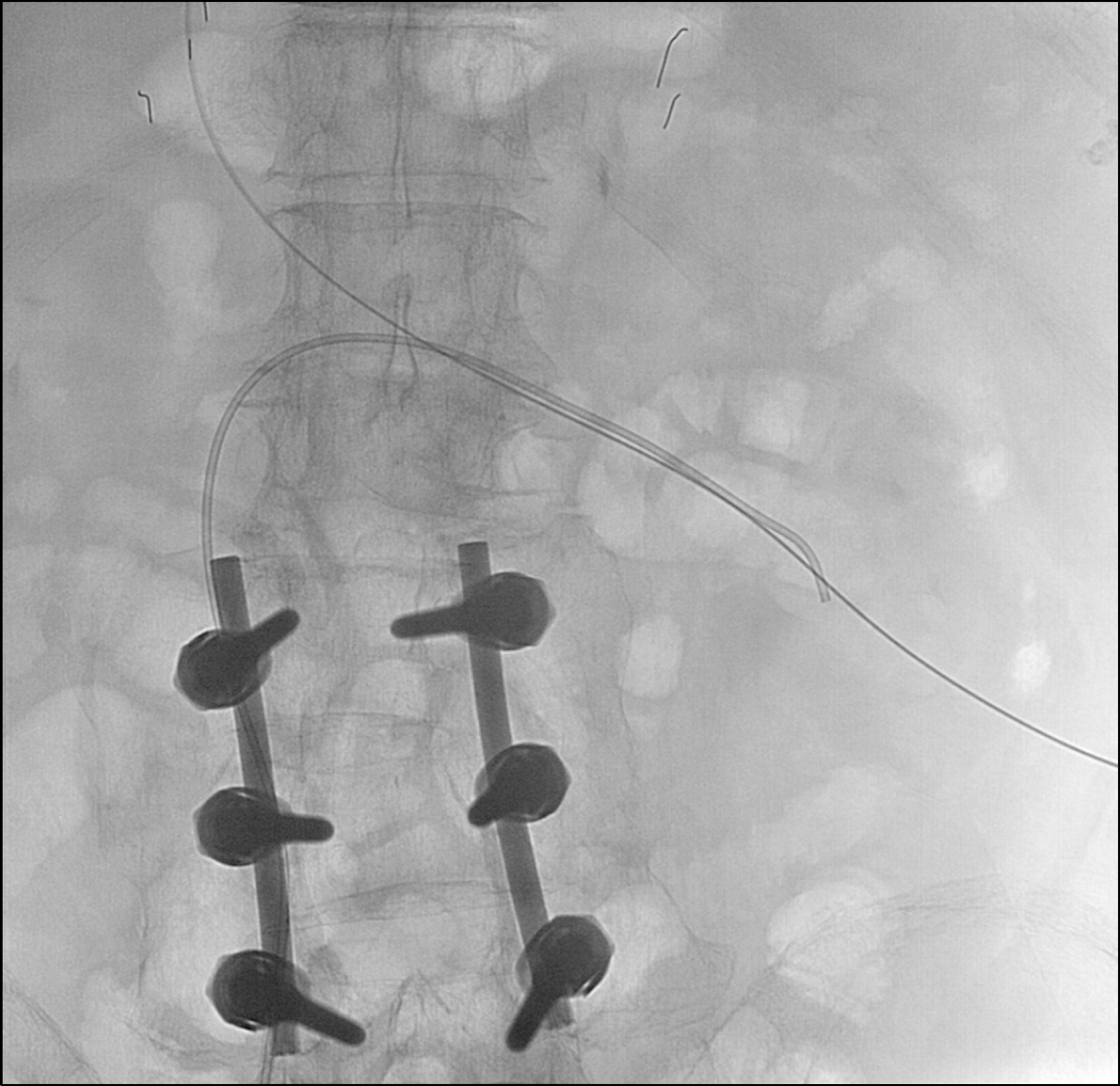Korean J Urogenit Tract Infect Inflamm.
2014 Apr;9(1):56-59. 10.14777/kjutii.2014.9.1.56.
Renal Venous Perforation during Reinsertion of a Percutaneous Nephrostomy Catheter
- Affiliations
-
- 1Department of Urology, Yeungnam University College of Medicine, Daegu, Korea. junghc@ynu.ac.kr
- 2Department of Urology, School of Medicine, Kyungpook National University, Daegu, Korea.
- 3Department of Emergency Medicine, Yeungnam University College of Medicine, Daegu, Korea.
- KMID: 1921579
- DOI: http://doi.org/10.14777/kjutii.2014.9.1.56
Abstract
- While the sustainment of percutaneous nephrostomy with regular change in chronic un-operable cases is widely performed for relief of urinary obstructions, performance of the blind procedure without fluoroscopic monitoring could result in clinical disaster. We report on a case of direct renal vein injury by mis-guidance of a nephrostomy catheter, which was successfully managed conservatively by serial venography monitoring combined with intensive conservative treatment. To the best of our knowledge, this is the first report on management of a renal vein injury during the percutaneous nephrostomy.
Keyword
Figure
Reference
-
1. Skolarikos A, Alivizatos G, Papatsoris A, Constantinides K, Zerbas A, Deliveliotis C. Ultrasound-guided percutaneous nephrostomy performed by urologists: 10-year experience. Urology. 2006; 68:495–9.
Article2. Thanos L, Mylona S, Stroumpouli E, Kalioras V, Pomoni M, Batakis N. Percutaneous CT-guided nephrostomy: a safe and quick alternative method in management of obstructive and nonobstructive uropathy. J Endourol. 2006; 20:486–90.
Article3. Cochran ST, Barbaric ZL, Lee JJ, Kashfian P. Percutaneous nephrostomy tube placement: an outpatient procedure? Radiology. 1991; 179:843–7.
Article4. Jones CD, McGahan JP. Computed tomographic evaluation and guided correction of malpositioned nephrostomy catheters. Abdom Imaging. 1999; 24:422–5.
Article5. Egilmez H, Oztoprak I, Atalar M, Cetin A, Gumus C, Gultekin Y, et al. The place of computed tomography as a guidance modality in percutaneous nephrostomy: analysis of a 10-year single-center experience. Acta Radiol. 2007; 48:806–13.
Article6. Khoo L, Anson K, Patel U. Success and short-term complication rates of percutaneous nephrostomy during pregnancy. J Vasc Interv Radiol. 2004; 15:1469–73.
Article7. Stables DP. Percutaneous nephrostomy: techniques, indications, and results. Urol Clin North Am. 1982; 9:15–29.
Article8. Farrell TA, Hicks ME. A review of radiologically guided percutaneous nephrostomies in 303 patients. J Vasc Interv Radiol. 1997; 8:769–74.
Article9. Chan PN, Wong KT, Lee SF, Yu SC. Case report: lumbar artery bleeding as a complication of percutaneous nephrostomy in a patient with coagulopathy. Br J Radiol. 2004; 77:878–80.10. Gupta M, Bellman GC, Smith AD. Massive hemorrhage from renal vein injury during percutaneous renal surgery: endourological management. J Urol. 1997; 157:795–7.
Article
- Full Text Links
- Actions
-
Cited
- CITED
-
- Close
- Share
- Similar articles
-
- A case of nephro-colo-cutaneous fistula after percutaneous nephrostomy
- Percutaneous nephrostomy in 10 Patients with Postrenal Failure
- Percutaneous Nephrostomy: Experience in 101 Cases
- An Unusual Complication of Colonic Perforation Following Percutaneous Nephrostomy in a Grade IV Blunt Renal Injury Patient
- An Experimental Study on the Morphological and Functional Changes of the Kidney by Percutaneous Nephrostomy






